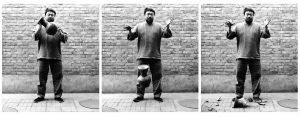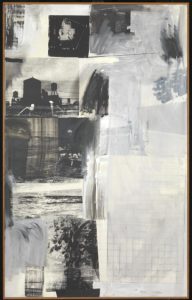The definition of Postmodernism is that it’s a movement that is filled with satire and finding a part of art that pushes the boundary’s on to modernist art movement. With the arrival of Neo-dada movement and pop art after the war for the Americans, the two art styles merged to create a breed of artists who named their art as postmodernists. Artists reacted after seeing this movement in full swing and it spilt into minimalism, conceptual art, video art, performance art and installation art all began during the next four decades after.
A good representation of satire in a postmodernist approach are the balloon animals made by Jeff Koons that personally I feel is a perfect contrast where hes used an object that is a basic balloon animal that usually would be valueless yet the material he uses is a hard strong valuable metal and he expands in to a much larger than life scale. “Since the 1980s, Koons has been a prevalent influence on contemporary artists who explore commercialism, advertising strategies, Duchampian conceptualism and pop aesthetics.” (The Art Story, 2017) Koons evidently had a very large effect on many different mediums in the art world and recently he’s joined the famous social media platform ‘Snapchat’ to create ‘virtual vandalism’ so that his sculptures can be placed using a phone anywhere in the world, which I feel could be the next level that pushes art into the virtual world even further.
Ai Weiwei I’ve followed for quite a few years and ive always thought the theory behind his works were much more beautiful and poetic than the actual physical piece. “This artwork is called dropping a Han Dynasty Urn and for me it is Ai Weiwei’s most provocative gesture. I feel highly provoked. It shows the artist letting go of an elegant object made with intelligence, imagination and love more than 2,000 years ago and letting it smash to bits on the ground.” (Jones, 2017) As this opinion shows, Weiwei’s art can be perceived very negatively if it had no description, and from what I’ve learned about the dropping of the Han dynasty piece is that its made to shock his audience to realise that the Chinese government is destroying huge areas with historical significance to rebuild brand new homes and power stations. The pot is resembling the thousands of other historical artefacts that are also being smashed without remorse.
A man that came from nothing and expresses that in his works is Robert Rauschenberg who creates his art using innovative combinations to have beautiful conclusions. His Almanac piece was the painting that caught my eye that he made in 1962, he printed images and took pictures from magazines then applied brush strokes that pointed to the abstract expressionism movement. “Like all these works, Almanac has no specific meaning or narrative. The images are organised in a loose, poetic manner, creating an impression of visual flux that allows the viewer to free-associate.” (Tate, 2017)
The Art Story. (2017). Jeff Koons Biography, Art, and Analysis of Works. [online] Available at: http://www.theartstory.org/artist-koons-jeff.htm [Accessed 6 Dec. 2017].
Jones, J. (2017). Who’s the vandal: Ai Weiwei or the man who smashed his Han urn?. [online] the Guardian. Available at: https://www.theguardian.com/artanddesign/jonathanjonesblog/2014/feb/18/ai-weiwei-han-urn-smash-miami-art [Accessed 6 Dec. 2017].
Tate. (2017). ‘Almanac’, Robert Rauschenberg, 1962 | Tate. [online] Available at: http://www.tate.org.uk/art/artworks/rauschenberg-almanac-t01135 [Accessed 6 Dec. 2017].



